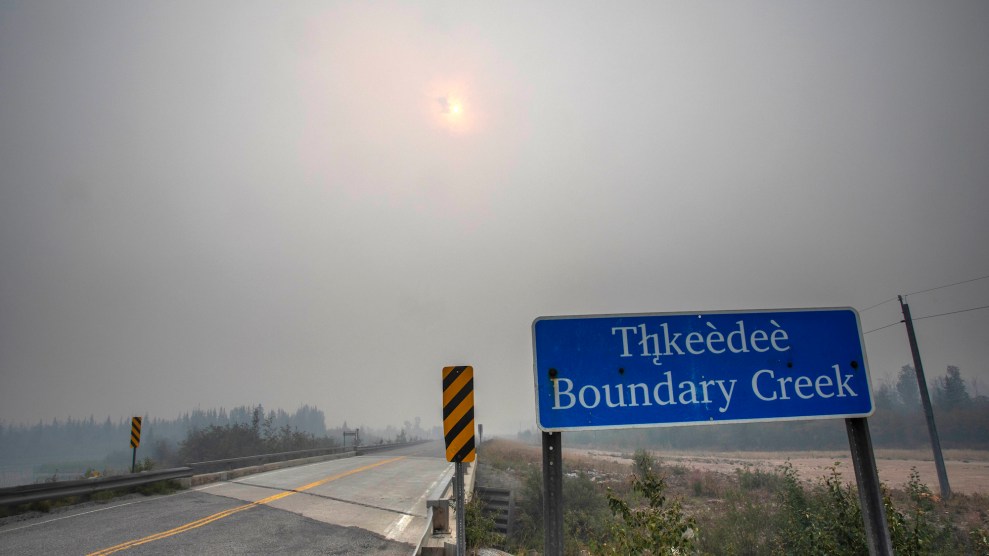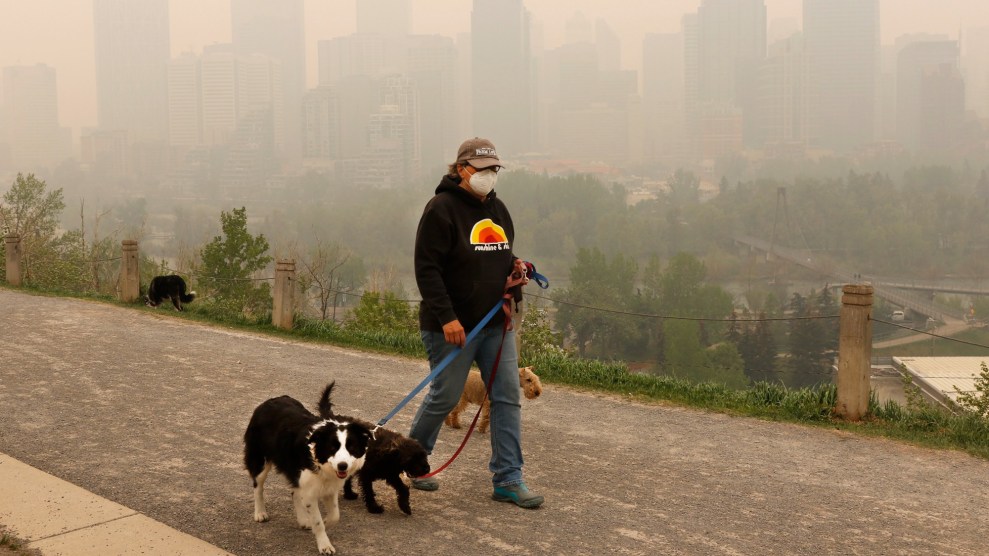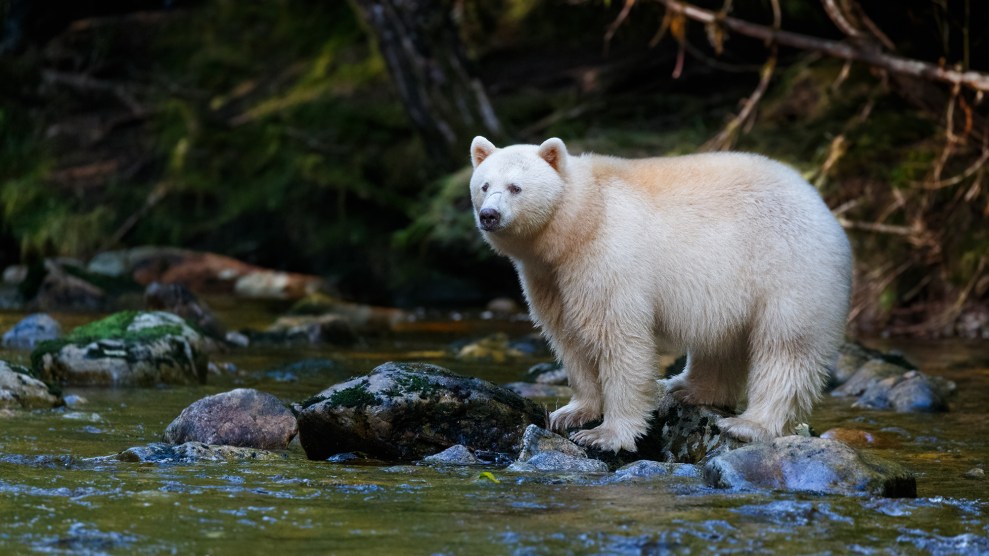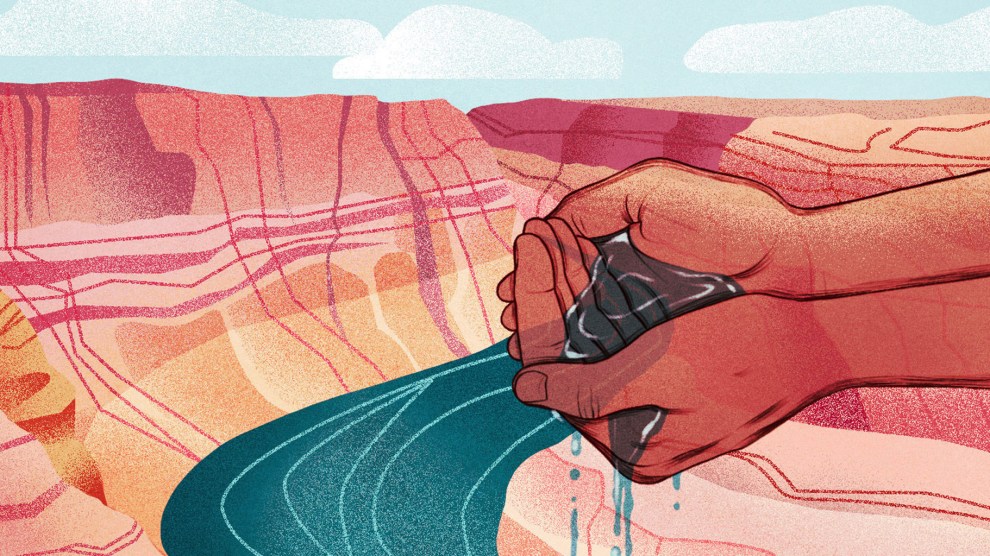
Wildfire smoke fills the air at Boundary Creek, Northwest Territories about 15 miles east of Yellowknife.Bill Braden/The Canadian Press/AP
This story was originally published by Grist and is reproduced here as part of the Climate Desk collaboration.
More than 230 fires are burning in the Northwest Territories of Canada, scorching over 8,000 miles of forest, and displacing hundreds of Indigenous and First Nations peoples. The population of the Northwest Territories is nearly 50 percent Indigenous.
“It’s all just really terrifying,” said Morgan Tsetta, a member of the Yellowknives Dene First Nation in a TikTok video she released Tuesday. Tsetta lives in Yellowknife, the region’s capital city, which she said was at risk of evacuation and that residents were preparing go bags in case they had to flee.
With the only road leading out of Yellowknife blocked due to the fires, Tsetta said alternate routes could take hours.
“There is little relief to the 20,000 residents of the capital of the Northwest Territories as three wildfires surround us and there is no feasible way for us to leave,” she said in the video.
Amidst the chaos, First Nations residents in the Northwest Territories are checking in online via Facebook and sharing support sources.
This season, wildfires have spread across Canada with greater intensity than ever before with more than 1,000 fires occurring since the start of the year. On June 25, the Canadian Interagency Forest Fire Centre declared that the 2023 wildfire season had burned the largest area in Canada’s recorded history: nearly 52,000 miles. Canadian fires in June sent massive smoke clouds to the East Coast of the United States, endangering the health of millions of residents. The air quality in some areas got as high as 486, nearing the top of the Environmental Protection Agency’s 500-point air quality scale, meaning the air was dangerous to breathe.
The fires in the Northwest Territories started over the weekend due to lightning strikes and extreme winds that pushed the flames throughout the region. On Monday, local officials issued warnings which advised residents in multiple towns and hamlets to evacuate as wildfires spread near the communities some of which reached a level 3 threat, which is the highest on the scale meaning imminent danger.
By Monday evening, the biggest rescue operation in Northwest Territories history was underway as stranded residents were airlifted to safety by the Canadian armed forces. By Tuesday morning, more than 200 people had been evacuated, and the number is still rising.
On Tuesday, the Northwest Territories declared a state of emergency and sought help from the Canadian government and military for aid. Members of the Canadian Armed Forces, including 124 soldiers have been dispatched to the Northwest Territories, and an additional 100 soldiers are set to help with firefighting logistics, like dousing hot spots and clearing areas. According to the Associated Press, hundreds of civilians wait to be airlifted to safety.
“The decision to declare a territory-wide State of Emergency allows the Government of the Northwest Territories and our partners to access and deploy resources,” said Northwest Territories Municipal and Community Affairs Minister Shane Thompson in a notice sent out Wednesday. “We find ourselves in a crisis situation and our government is using every tool available to assist.”
Reports from the Copernicus Atmosphere Monitoring Service showed that from January 1 to July 31 of this year, carbon emissions from wildfires across Canada total 290 megatons, which represents over 25 percent of the global total for the year so far.













